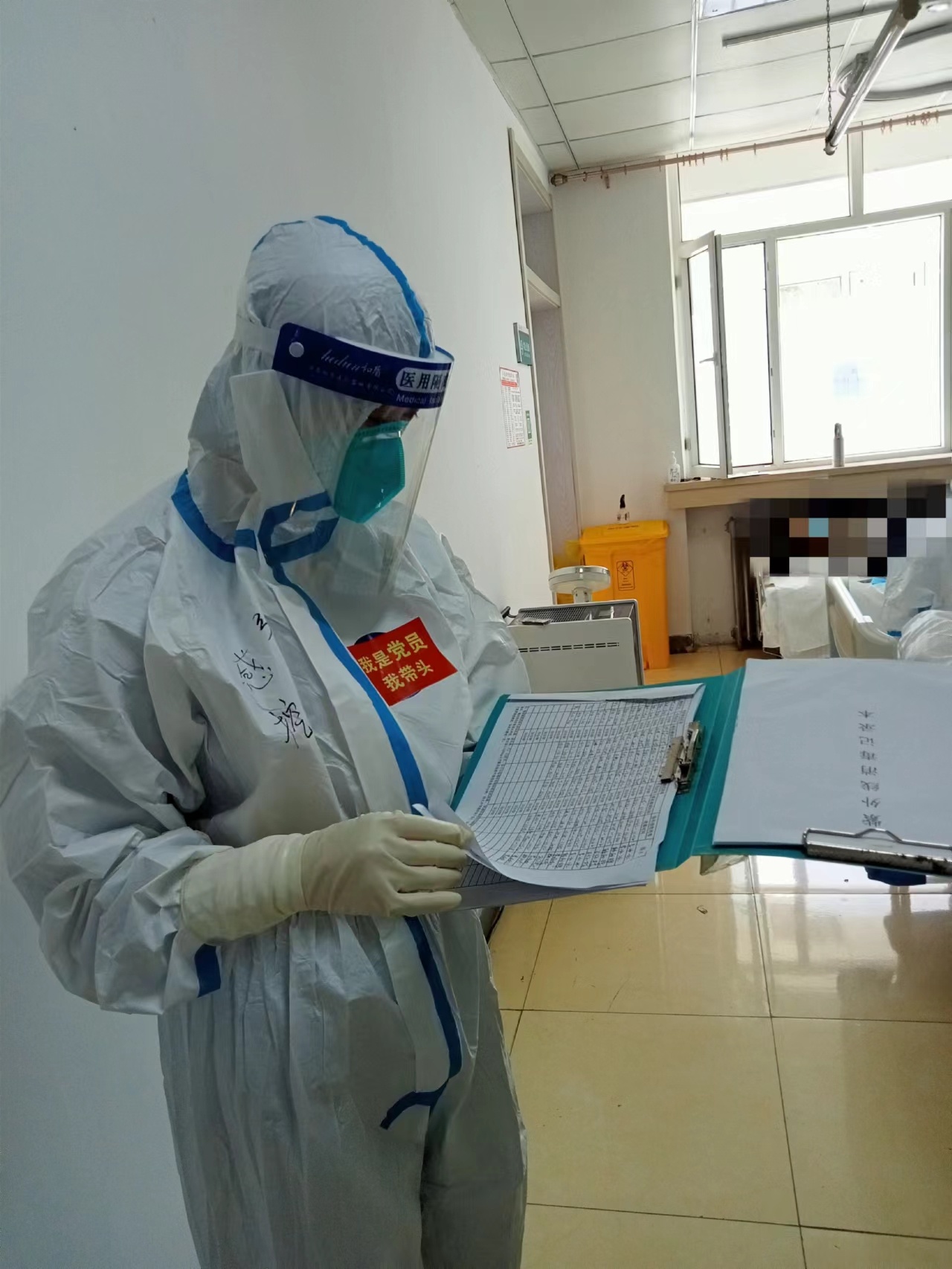MNC favors, emerging gathers, why is nucleic acid drugs standing on the air?
Author:Yaizhi.com Time:2022.09.22
MNC favors, emerging gathers, why is nucleic acid drugs standing on the air?
Source: Yaozhi.com/Forest
A few days ago, Fiere Biotech, a well -known media industry, released the 2022 Fiere 15 list, and as many as half of the selected companies are new in the field of nucleic acid treatment.
What is nucleic acid drug?
Simply put, nucleic acid drugs refer to general molecules formed by nucleotide.
Specifically, nucleic acid drugs include antisrojin oligonon drugs (ASO), small interference RNA (SIRNA), nucleic acid suitable ligand drugs (Aptamer), messenger RNA (mRNA), etc. Among them, MRNA new crown vaccine in the prevention and treatment of new crown pneumonia is a type of nucleic acid drugs.
Another possibility of new drugs -nucleic acid drugs
The development of nucleic acid drugs can be traced back to the 1950s. In 1956, biophysicist Alexander Rich found that two single -chain RNAs could form a dual chain together like DNA. In the following 20 years, a series of functions about RNA have been decrypted.
In 1998, the first ASO drug Vitravene (FOMIVIRSEN) was approved to be listed, which was developed by IONIS and used to treat the eye CMV virus infection of HIV patients. In 2004, the first RNA adapter drug Macugen (Pegaptanib) was approved for listing, which was jointly developed by Pfizer and Eyetech for treatment of WAMD. In 2018, the first SIRNA drug onPattro (Patisiran) was approved for listing, which was developed by Alnylam for the treatment of Hattr.
In 2020, the new crown epidemic accelerated MRNA drugs. At present, there are two new crown MRNA vaccines in the world, which are approved for listing, namely Biontech and Pfizer jointly developed by COMIRNATY (BNT162B2) and Spikevax (MRNA-1273) developed by Moderna.
Figure 1. The key progress schedule of major discovery and treatment of RNA
Picture source: Reference materials 1
With the diverse development of delivery technology and RNA drugs, nucleic acid drugs have opened up the era of prosperity and development, and are also known as the third -generation drug after chemical drugs and antibody drugs. Compared with traditional chemotherapy drugs, nucleic acid drugs have significant advantages:
Targeted "non -medicine" target. The target of nucleic acid drugs can be almost any genetic component in the cell, including the target that many small molecules and antibody drugs cannot be targeted.
Quickly produce. It may take years to develop and produce new small molecules or antibody drugs. However, once the chemical structure of RNA is determined and the transmitted approach to the body, it can quickly design and synthesize RNA drugs for clinical trials. The new crown vaccine of Biontech/Pfizer and Moderna is a good example.
It is long -term. Although natural RNA is easily degraded by natural nucleic acid enzymes, the stability of RNA will be greatly improved when synthesizing it. For example, the silent effect of SiRNA drugs approved in 2021 can last more than six months after a single injection.
Used for rare disease treatment. Pharmaceutical companies are often reluctant to produce new drugs for very rare diseases because potential profits are limited. However, as far as RNA therapy is concerned, once the chemical composition of RNA and its transmission system is optimized, the cost of developing these drugs for new diseases will be greatly reduced.
As of now, the FDA in the United States has approved 9 ASO, 4 SiRNAs, 1 Aptamer, and two new MRNA vaccines, and hundreds of candidate products that are being studied clinically.
U.S. FDA approved nucleic acid drug
Picture source: Reference materials 1
Antiocynucleotide drug (ASO)
ASO is the earliest nucleic acid drugs for developing the most drug -obtained drugs.
ASO is combined with a specific sequence to regulate the expression of the target RNA. Although the structure of these antonyms is mainly determined by their specific sequences, their chemical properties can be adjusted and modified to promote its specificity and stability. The first approved ASO drug is IONIS's Vitravene (FOMIVIRSEN), which is used to treat giant cell viral retinitis. It is particularly suitable for patients with combined infection with human immune defect (HIV). Combine the mRNA combination of the mRNA of the IMMEDIATE-EARLY-2 (IE-2) protein necessary for CMV replication to inhibit CMV replication. However, the drug was withdrawn by the FDA in 2001 because the anti -reverse virus therapy for HIV patients significantly reduced the demand for ViteAvene.
In the true sense, ASO drugs, which are approved by the FDA -based and antonym -based binding principle, is Mipomersen, which was approved in the United States in 2013. The medicine is developed by Jianzan Company, a subsidiary of Sanofi, France, to treat drugs for genetic cholesterol metabolism.
At present, the ASO drugs that have been approved by the FDA in the United States are Mipomersen, Inotersen, Nusinersen, ETEPLIRSEN, GOLODIRSEN, Volanesors, VILTOLARANEN, Casimersen. Among them, Nusinersen (SPINRAZA, Nosna Sodium), which was used to treat spinal muscle atrophy, reached US $ 2.097 billion in 2019, becoming the first "heavy bomb" in the field of small nucleic acid drugs. The drug has been listed as an orphan drug in China, and was successfully included in the medical insurance directory through the national medical insurance category negotiations in 2021.
In addition to these approved drugs, dozens of ASO drugs are currently in the clinical research stage. The treatment field covers the central nervous system, cardiovascular, anti -infection and tumor.
Small interference RNA (SiRNA)
SIRNA is also called silent RNA, short interference RNA, or non -encoded RNA. SIRNA uses endogenous RNA interference pathways to adjust its expression of the target RNA. Due to its specificity, adaptability and extensive targeted ability, it is also effective in the personalized gene therapy of a variety of diseases. SiRNA's discovery won the Nobel Prize in Physiology in 2006.
However, naked SiRNA is unstable in blood flow, and in addition to immunogenicity, it cannot effectively pass through the cell membrane. Therefore, the precise design delivery system is essential to give full play to the potential of this therapy.
With the continuous innovation of RNA interference delivery methods, in 2018, the world's first SiRNA drug Patisiran was finally approved to be listed. The drug was delivered to the liver through the new lipid nanopartical (LNP) technology wrapping to treat genetic thyroid Multi -degeneration multi -type neuropathy guidance.
At present, 4 SiRNA drugs have been approved by the US FDA, namely Patisiran, Givosiran, Lumasiran, and Inclisiran.
Nucleic acid adaptive ligand drug
The adaptive body is a nucleic acid construct that is designed to combine specific proteins to regulate its function. At present, only one of RNA -based adaptive drugs have been approved by the US FDA.
PEGAPTANIB is a constructor of 28 nucleotides, which are approved for the treatment agent for macular degeneration (AMD) for age (new vascular) age (AMD). There are still several types of RNA adhesives under development, and RNA adaptors that are expected to treat other diseases are expected in the future.
Credit RNA (MRNA) drug
MRNA is a single -chain long nucleic acid, which can convey genetic information in DNA and translates to synthetic protein. After the mRNA enters the body, it can express specific protein by autologous cells to avoid the influence of in vitro factors; the human immune system can be adjusted through endogenous expression function protein, and autologous threats including cancer cells. MRNA products can be divided into MRNA vaccines and mRNA drugs.
MRNA vaccine: Direct translation contains MRNA encoding antigen protein. The MRNA vaccine encoding the antigen sequence is introduced to the cells through lipid nano -vectors and other delivery platforms, and then human cells produce antigen through translation to activate the immune response. Compared with traditional vaccines, the MRNA vaccine can induce more extensive and effective cell immune and body fluid immune response through endogenous expression of antigen protein, producing higher protection rates.
In 2020, two new MRNA -based new coronary pneumonia vaccines were approved in most countries in the world, and their effectiveness has been fully proven in the popularity. In addition to being a preventive vaccine, the MRNA vaccine can also be used as personalized drugs for specific tumors.
Overview of the R & D pipeline layout of some MRNA vaccine companies worldwide
Photo source: Company Announcement, Company's official website, Guo Jin Securities Institute
MRNA drug: can be used as protein supplement or alternative therapy. MRNA can not only play a role in vaccine, but also MRNA drug replacement therapy is also one of the main MRNA treatment methods. Through the in vitro synthetic mRNA sequence, the delivery system is delivered to the cells, and the mRNA can be injected with the patient to the patient's own cells to start the production of drugs, compensate the defective gene/protein. Single cloning antibodies, enzymes, and cytokines are used to treat various diseases such as metabolic diseases, heart disease and immune oncology.
Nucleic acid drug station upper air outlet
After the outbreak of the new crown epidemic in 2020, the success of the MRNA vaccine showed the huge potential of nucleic acid drugs and quickly became a hot spot in the new drug research and development market.
Encouraged by successful foreign cases, my country's nucleic acid drug industry has also developed rapidly. On the MRNA vaccine track, companies such as Aibo Biology, Simiculi, Bluebird Biology, Kangxino, Stone Medicine Group are accelerating product development. At present, more than a dozen MRNA vaccines have entered the clinical trial stage. On the small nucleic acid drug track, San Nuo Pharmaceutical successfully landed on the Hong Kong Stock Exchange, and its core product STP705 is conducting clinical research in China and the United States; Ruibo Bio has also pushed two SiRNA drugs to the clinical research stage: RBD7022 and RBD1016; Xingyu Kunkun Kun Kun Kun Kun Kun Kun Kun Kun Kun Kun Kun Kun Kun Kun Kun Ze's SiRNA drug HT-101 has submitted clinical trial applications. Of course, as a new biotechnology product, nucleic acid drugs still face many challenges. For example, the delivery system is still one of the biggest challenges facing such therapies. The relatively new MRNA therapy is also facing problems such as short period of half -life, mRNA immunogenic risk, maximum protein expression, and mRNA delivery. In addition, the pricing and side effects of nucleic acid drugs are also worth noting.
The immature technology indicates both risks and opportunities. It is believed that with the advancement of technology, nucleic acid drugs will have more diversified development to bring hope to human cure diseases.
Reference materials:
1. RNA therapy: Rich History, Various Applications and UNLIMITED FUTURE PrOSPECTS.
2. R & D status and application prospects for nucleic acid drugs .cNKI.
3. The era of commercialization is coming, MRNA technology is expected to usher in the gold ten years. China -Thailand Securities
4. Nucleic acid vaccine, innovate the future. Guo Jin Securities
- END -
"Tongxin resistance" osmanthus fragrant drift haze -Democratic construction Qingbaijiang District branch anti -epidemic relief

In the season of Jin Gui Fragrant, the Democratic Construction Qing Baijiang Distr...
Zhang Shuping: "Fire Eye Golden Eyes" sensitive controller

In the campaign of epidemic prevention and control, there are such groups of peopl...


